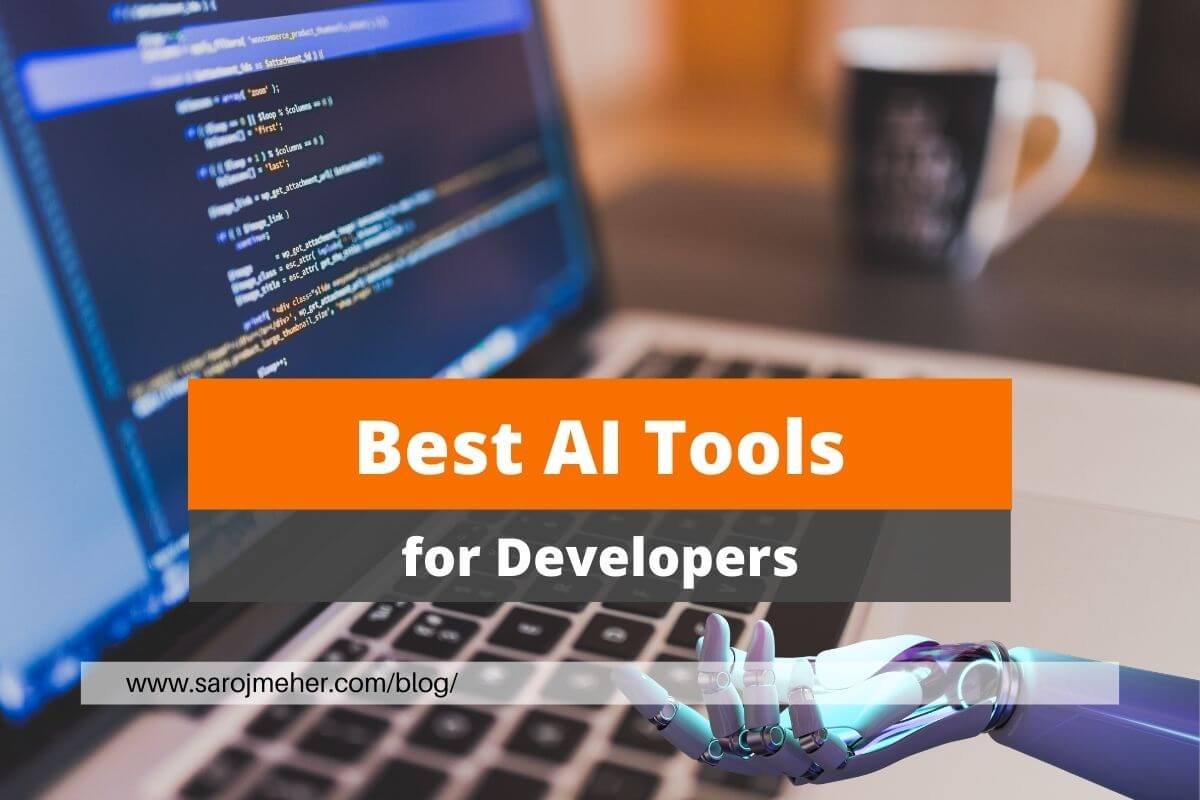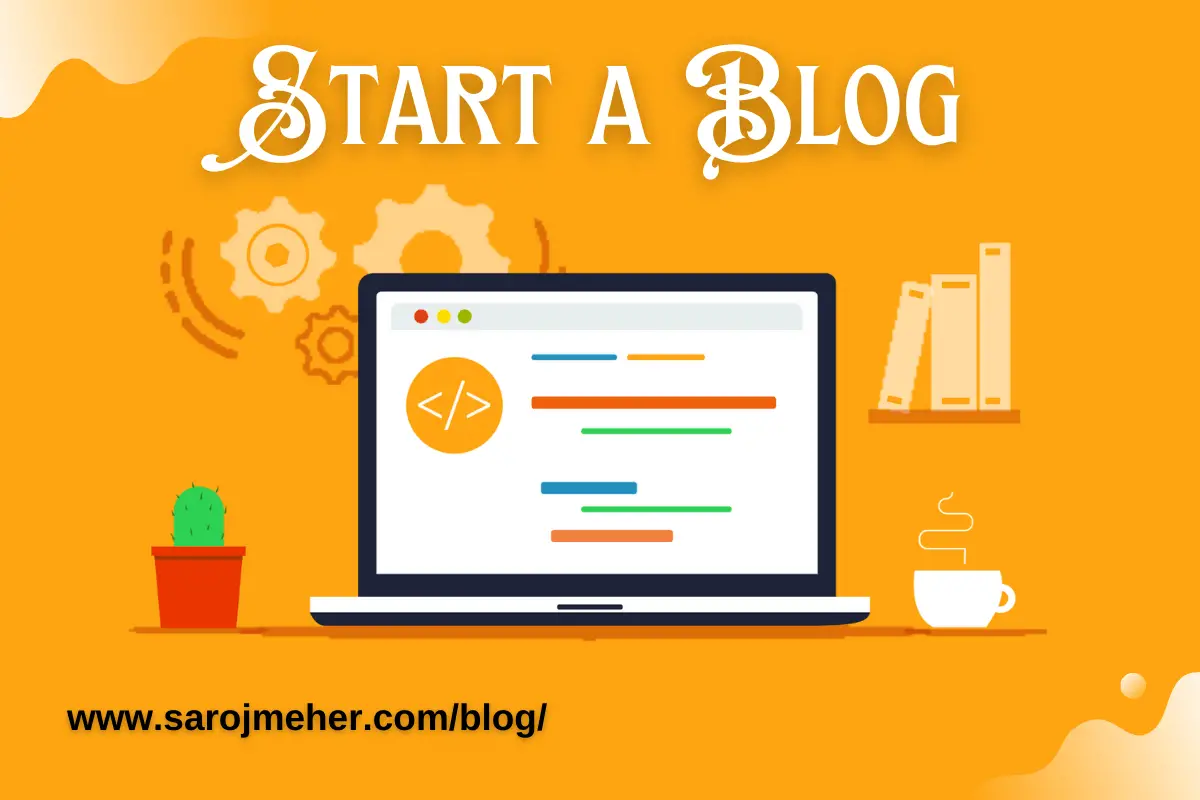Who are the developers?
A developer is a skilled technology professional who specializes in designing, building, and creating various types of software, websites, applications, and systems.
Why do developers need AI Tools?
Developers need AI tools to enhance their productivity and efficiency in various aspects of the software development lifecycle.
AI tools can automate repetitive tasks such as code generation, bug detection, and testing, thereby saving valuable time and effort.
These tools can analyze large volumes of data and provide valuable insights, helping developers make informed decisions and improve the overall quality of their software.
Additionally, AI tools can assist in natural language processing, enabling developers to interact with code and documentation more intuitively.
By leveraging AI tools, developers can streamline their workflows, accelerate development cycles, and ultimately deliver more robust and innovative software solutions.
10 Best AI Tools for Developers: Empowering Innovation and Efficiency
In today’s rapidly evolving technological landscape, artificial intelligence (AI) has become an indispensable tool for developers.
From streamlining workflows to enhancing decision-making processes, AI tools offer developers a wide range of capabilities to expedite development cycles and drive innovation.
In this article, we will explore ten of the best AI tools that empower developers to create cutting-edge solutions. We’ll delve into their features, pros, cons, and provide live links to their associated websites.
1. TensorFlow
Website: tensorflow.org
TensorFlow is an open-source machine learning framework developed by Google. It provides a comprehensive ecosystem of tools, libraries, and resources for building and deploying machine learning models.
TensorFlow is widely used by researchers, developers, and organizations for various applications, including computer vision, natural language processing, speech recognition, and deep learning.
Key features of TensorFlow:
- Computational Graph: TensorFlow uses a dataflow graph to represent mathematical operations. This graph allows for efficient execution and optimization of complex computations involving tensors (multi-dimensional arrays) and neural networks.
- Neural Network Support: TensorFlow provides a high-level API called Keras, which simplifies the process of building and training deep learning models. It supports various neural network architectures, including convolutional neural networks (CNNs), recurrent neural networks (RNNs), and transformers.
- Distributed Computing: TensorFlow supports distributed computing, allowing users to train models across multiple devices or machines. It provides tools for distributed training and inference, enabling scalability and performance improvements.
- TensorBoard: TensorFlow includes TensorBoard, a visualization tool that helps analyze and monitor the training process and model performance. It allows users to visualize metrics, network architectures, and other important aspects of their models.
- Deployment Options: TensorFlow supports deployment across various platforms, including mobile devices, web browsers, edge devices, and cloud infrastructure. This makes it versatile for deploying models in different environments.
- Community and Ecosystem: TensorFlow has a large and active community of developers, researchers, and enthusiasts. This community contributes to the development of new features, shares tutorials and resources, and provides support for users.
TensorFlow has gained popularity due to its flexibility, scalability, and extensive capabilities. It has been used in a wide range of applications, from image and speech recognition to natural language processing and autonomous systems. Its versatility and comprehensive set of tools make it a powerful framework for machine learning tasks.
Pros:
- Powerful open-source framework for machine learning and deep learning.
- Extensive community support with a vast ecosystem of pre-built models and resources.
- Scalable and efficient, making it suitable for both research and production environments.
Cons:
- Steeper learning curve for beginners due to its low-level nature.
- Requires familiarity with Python and numerical computing concepts.
2. PyTorch
Website: pytorch.org
PyTorch is another open-source machine learning framework in this list, which is widely used for developing and training deep learning models.
It is known for its dynamic computational graph, which allows for more flexibility and intuitive coding compared to static graph frameworks like TensorFlow.
Developed primarily by Facebook’s AI Research (FAIR) lab, PyTorch has gained popularity among researchers and practitioners in the machine learning community.
Here are some key features and advantages of PyTorch:
- Dynamic Computational Graph: PyTorch utilizes a dynamic computational graph, meaning the graph is constructed on-the-fly during runtime. This provides greater flexibility in model development, as users can easily modify and debug their models using standard Python control flow and debugging tools.
- Easy-to-Use API: PyTorch provides a Pythonic and intuitive API, making it user-friendly and easy to learn. It has a simple syntax that allows developers to quickly prototype and experiment with different model architectures and ideas.
- Strong Support for Neural Networks: PyTorch offers a wide range of tools and functionalities specifically designed for building neural networks. It includes pre-built modules for commonly used layers, activation functions, loss functions, and optimizers. Additionally, PyTorch integrates seamlessly with the torchvision library, which provides datasets and utilities for computer vision tasks.
- GPU Acceleration: PyTorch enables GPU acceleration for training and inference, which significantly speeds up the execution of deep learning models. It provides support for CUDA, allowing users to leverage the computational power of NVIDIA GPUs.
- Active Community and Ecosystem: PyTorch has a thriving community of developers and researchers who contribute to its growth and share their knowledge. The community-driven nature of PyTorch results in a rich ecosystem of libraries, extensions, and pre-trained models that can be readily utilized.
- Seamless Deployment: PyTorch allows for easy deployment of trained models to various platforms, including mobile devices, edge devices, and cloud infrastructure. It offers tools like TorchScript and ONNX (Open Neural Network Exchange) to convert and optimize PyTorch models for deployment.
PyTorch is widely recognized for its flexibility, ease of use, and strong support for deep learning. It has been embraced by both academia and industry, driving advancements in areas such as computer vision, natural language processing, and reinforcement learning.
Pros:
- Flexible and user-friendly deep learning framework.
- Dynamic computational graph enables easy debugging and model development.
- Extensive community support with active research and development.
Cons:
- Slightly slower performance compared to TensorFlow on large-scale deployments.
- Smaller ecosystem of pre-trained models compared to TensorFlow.
3. Scikit-learn
Website: scikit-learn.org
Scikit-learn is a popular open-source machine learning library in Python that provides a wide range of tools and algorithms for data preprocessing, feature selection, model training, and evaluation.
It is built on top of other scientific Python libraries such as NumPy, SciPy, and matplotlib, making it a powerful and accessible resource for machine learning practitioners and researchers.
Another notable feature of scikit-learn is its emphasis on model evaluation and validation.
One of the key strengths of scikit-learn is its comprehensive set of machine learning algorithms.
It includes implementations of various supervised and unsupervised learning algorithms, such as linear regression, logistic regression, support vector machines, decision trees, random forests, clustering algorithms, and more. These algorithms are designed to be efficient, scalable, and easy to use, allowing users to quickly experiment with different models and techniques.
Scikit-learn’s user-friendly documentation and extensive community support further contribute to its appeal.
Pros:
- Robust and user-friendly library for machine learning in Python.
- Wide range of algorithms for classification, regression, clustering, and more.
- Excellent documentation and community support.
Cons:
- Limited support for deep learning compared to frameworks like TensorFlow or PyTorch.
- May not be suitable for extremely large-scale datasets.
4. Keras
Website: keras.io
Keras is a high-level deep learning framework written in Python that runs on top of other machine learning libraries, such as TensorFlow and Theano.
It provides a user-friendly interface and abstraction for building and training deep learning models.
Keras was designed with a focus on simplicity, ease of use, and rapid prototyping, making it a popular choice among researchers and practitioners in the field of deep learning.
One of the main advantages of Keras is its intuitive and modular API. It offers a rich set of pre-built layers, activation functions, loss functions, and optimizers, which can be easily combined and configured to create complex neural network architectures.
Keras provides support for a wide range of deep learning tasks, including image classification, object detection, natural language processing, and sequence modeling.
The key feature of Keras is its emphasis on user-friendliness and ease of debugging.
Pros:
- High-level neural networks API that runs on top of TensorFlow or Theano.
- User-friendly interface, making it ideal for beginners.
- Supports both convolutional and recurrent networks, as well as their combinations.
Cons:
- Limited customization options compared to lower-level frameworks like TensorFlow or PyTorch.
- Less suitable for complex research-oriented tasks.
5. Jupyter Notebook
Website: jupyter.org
Jupyter Notebook is an open-source web application that allows you to create and share documents containing live code, equations, visualizations, and narrative text.
It provides an interactive computing environment that supports multiple programming languages, including Python, R, and Julia.
Jupyter Notebook is widely used by data scientists, researchers, and educators for data exploration, prototyping, data analysis, and collaborative work.
The key feature of Jupyter Notebook is its ability to combine code execution, rich media, and explanatory text within a single document.
The notebook files can be saved in different formats, including HTML, PDF, or Markdown, enabling easy dissemination and communication of results.
Pros:
- Interactive web-based environment for creating and sharing code, visualizations, and documents.
- Supports multiple programming languages, including Python, R, and Julia.
- Enables seamless integration of code, visualizations, and explanatory text.
Cons:
- Can be resource-intensive when working with large datasets or computationally expensive operations.
- Limited support for code version control and collaboration.
6. OpenCV
Website: opencv.org
OpenCV (Open Source Computer Vision Library) is an open-source computer vision and machine learning library that provides a wide range of algorithms and tools for image and video processing, object detection and recognition, feature extraction, and more.
It is written in C++ and offers interfaces for Python and other programming languages, making it accessible and widely used across different platforms and applications.
OpenCV is designed to be efficient and optimized, allowing for real-time computer vision tasks on various hardware devices, including desktops, mobile devices, and embedded systems.
Beyond image and video processing, OpenCV integrates with other libraries and frameworks to expand its capabilities. For example, it supports integration with deep learning frameworks like TensorFlow and PyTorch, allowing users to combine the power of deep learning with the image processing capabilities of OpenCV.
Pros:
- Widely used computer vision library with extensive functionality.
- Supports various platforms and programming languages.
- Offers pre-trained models for object detection, image classification, and more.
Cons:
- Steep learning curve for beginners due to complex API documentation.
- Limited support for deep learning compared to dedicated deep learning libraries.
7. NLTK (Natural Language Toolkit)
Website: nltk.org
NLTK (Natural Language Toolkit) is a powerful Python library specifically designed for working with human language data.
It provides a comprehensive set of tools and resources for tasks such as text processing, tokenization, part-of-speech tagging, stemming, parsing, semantic analysis, and more.
NLTK is widely used by researchers, students, and practitioners in the field of natural language processing (NLP) and computational linguistics.
NLTK offers a wide range of text processing functionalities. It provides methods for tokenizing text, splitting it into individual words or sentences.
Pros:
- Comprehensive library for natural language processing (NLP) tasks.
- Offers a wide range of tools for tokenization, stemming, tagging, and more.
- Supports multiple NLP corpora and lexicons.
Cons:
- May not be as performant as newer, specialized NLP libraries.
- Limited support for deep learning-based NLP models.
8. Apache Spark
Website: spark.apache.org
It provides a unified and flexible programming model that allows developers to write distributed data processing applications easily.
Spark offers high-level APIs in multiple languages, including Scala, Java, Python, and R, making it accessible to a wide range of developers.
Another notable feature of Spark is its support for data integration and connectivity with various data sources.
It supports distributed data processing on clusters of machines and can be easily integrated with other big data technologies like Apache Hadoop, Apache Hive, and Apache Kafka.
Pros:
- Powerful open-source distributed computing system.
- Enables processing of large-scale datasets in parallel across clusters.
- Supports machine learning and stream processing capabilities.
Cons:
- Requires significant computational resources for optimal performance.
- Steeper learning curve compared to traditional data processing frameworks.
9. Dialogflow
Website: dialogflow.cloud.google.com
Dialogflow is a cloud-based conversational AI platform developed by Google. It allows developers to create intelligent virtual agents, chatbots, and voice assistants that can understand and respond to user queries in a natural and conversational manner.
With Dialogflow, developers can build powerful and interactive conversational interfaces for various applications, including customer support, virtual assistants, and smart home devices.
One of the key features of Dialogflow is its natural language understanding (NLU) capabilities. It uses machine learning algorithms to analyze user input and extract the meaning and intent behind the text or voice queries.
Dialogflow supports a wide range of pre-built entity types and intents, and developers can customize and train the models to better understand user interactions. This enables the creation of intelligent conversational agents that can accurately interpret user requests and provide appropriate responses.
Dialogflow also offers integrations with popular messaging platforms, such as Facebook Messenger, Slack, and Google Assistant, allowing developers to deploy their conversational agents across multiple channels.
It provides tools for managing conversations, handling context, and maintaining session states, making it easier to build conversational flows and handle complex dialogues. Additionally, Dialogflow offers rich analytics and insights, allowing developers to monitor and analyze user interactions to improve the performance and effectiveness of their conversational agents.
Pros:
- Google Cloud-powered conversational AI platform.
- Enables building chatbots and virtual assistants with natural language understanding.
- Offers integration with various messaging platforms and voice interfaces.
Cons:
- Limited customization options for complex conversational flows.
- Pricing can be expensive for high-volume usage.
10. IBM Watson
Website: cloud.ibm.com/watson
IBM Watson is an AI platform developed by IBM that provides a range of cognitive computing services and tools.
It offers natural language processing, machine learning, computer vision, and data analysis capabilities, allowing developers to build AI-powered applications.
Watson’s strength lies in its ability to understand and interpret human language, enabling applications to comprehend text and speech inputs. It also provides robust machine-learning capabilities for custom model training and deployment.
IBM Watson’s suite of AI services is designed to be accessible and scalable, making it suitable for various industries and applications.
It offers developer-friendly APIs and tools for easy integration and provides enterprise-grade security features for data protection.
IBM Watson empowers developers to incorporate advanced AI capabilities into their applications and solutions.
Pros:
- Comprehensive suite of AI services and tools.
- Covers natural language processing, computer vision, speech recognition, and more.
- Offers a user-friendly interface and flexible deployment options.
Cons:
- Higher pricing compared to some other AI tool providers.
- Documentation and support can be overwhelming for beginners.
Conclusion:
These ten AI tools represent the cream of the crop for developers seeking to leverage AI capabilities in their projects.
From deep learning frameworks like TensorFlow and PyTorch to specialized libraries like OpenCV and NLTK, each tool offers unique features and advantages.
Developers can choose the tools that best align with their project requirements, skill levels, and budgets, to drive innovation and unlock the true potential of artificial intelligence in their work.











